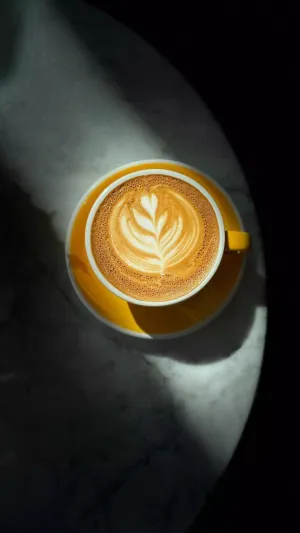Pouring latte art is the process of making leaves or other patterns on the original cappuccino or latte.
There has been no clear literature about the origin of pouring latte art. It is only known that it was popular in Europe and America at that time. Pouring latte art is a delicate professional technique that is demonstrated during coffee shows.
Similar innovative methods demonstrated the delicate technology, which greatly impressed the coffee industry at that time. From the very beginning, it gained the attention of the public. All the people were deeply attracted by the magic and splendid skills of pouring latte art.
At that time, the focus of coffee art was mainly on the design of patterns. However, after a long period of development and refinement, coffee art is not just about the visual aspect. The texture of the milk and the method of emulsion creation has undergone continuous refinement, resulting in enhancements over time. This has resulted in an overall improvement in the flavor of the beverage.
To achieve the so-called "color, aroma, and taste of the realm," there are numerous professional coffee books in Europe, America, and Japan that introduce the basics of "Latte Art." Many books feature coffee art on their covers as a symbol of professionalism. Furthermore, coffee art has become a necessary professional skill for colorful competitions currently.
The process of creating exquisite coffee art begins with the preparation of milk froth, a critical component in achieving the desired texture and consistency. Careful attention is paid to heating the milk to the optimal temperature, ensuring that the protein structure remains intact. Once heated, the milk is frothed using a specialized frothing device, incorporating air to create a dense and creamy froth.
To make the froth, a freshly brewed espresso is poured into a cup, followed by the addition of the prepared milk froth. The cup is then gently shaken from side to side, using only wrist movements to create intricate patterns on the surface of the coffee. As the cup is moved backward, the shaking motion is gradually reduced, resulting in the formation of delicate designs resembling leaves or flowers.
For those eager to learn the coffee art, mastering the technique of making froth is essential. By following precise instructions and honing their skills, aspiring baristas can create stunning works of art that delight the senses and captivate the imagination.
Coffee art represents the perfect union of craftsmanship and creativity, transforming a simple beverage into a work of art. With its rich history and enduring appeal, coffee art continues to inspire and enchant coffee lovers around the world, inviting them to savor not only the taste but also the beauty of a meticulously crafted cup of coffee.





